Check Engine Light turns On : All the Reasons Behind it and Solutions
Check engine light turns on, Has your vehicle been displaying a check engine light on its dashboard? If yes, you should not be worried because contrary to what many vehicle owners believe is a sign of a huge mechanical problem, this is not always the case.
However, this is not to say that whenever you notice the light you should ignore it. As the saying goes, prevention is better than cure and as such you need to be on alert on the same.
Your vehicle’s check engine light is turned on when the onboard computer in your vehicle detects any errors from its sensors and stores them in an OBD-II diagnostic code. That is why whenever you take it to your mechanic; he or she downloads the codes in order to diagnose its problems.
There is a myriad of reasons as to why your vehicle’s check engine light may be turned on. Therefore, in order to make sure that you do not spend much of your money on solving some little problems that you can fix, this article will delve into what causes the check engine light to turn on and how you can fix the problems on your own.
7 Causes Why Check Engine Light Turns On
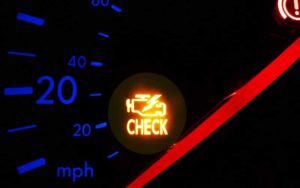
1. Damaged or Loose Connection of the Sensor
One of the common problems that make your vehicle’s check engine light turn on is a damaged sensor or one that has a bad electrical connection.
Whenever the sensor fails or receives a faulty electrical connection, it tends to send a signal to the onboard computer of your vehicle which in turn turns it on.
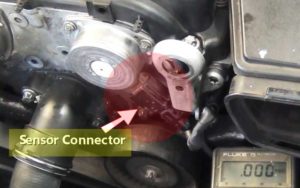
In case therefore you are not keen, you might diagnose a mechanical problem, which can, in turn, make you spend large sums of money trying to rectify the situation.
In addition, whenever the sensors of your vehicle wear and tear over time, they can send a faulty signal to your vehicle’s onboard computer, which in turn leads to the turning on of the check engine light.
Nonetheless, if this is the case, all you need to do is change the sensor or repair its loose electrical connection.
2. Damaged or Loose Fuel Cap
These days, automobiles are manufactured in a way that their fuel consumption and emissions are carefully monitored.
In order to achieve this, many of the cars have sensors in the fuel system, so as to openly display any problem that might arise.
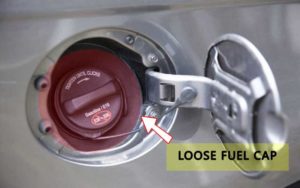
Therefore, if your vehicle’s fuel cap is damaged or loose, it will make its fuel cell to experience less pressure.
This will in turn send a signal to your vehicle’s sensor that things are not okay and thus the turning on of the check engine light.
Therefore, whenever you notice the turning on of your vehicle’s check engine light, then it could be that your fuel cap may be loose or damaged. In order to make the right diagnosis of this, you need to check out whether the cap locks properly or your vehicle smells of fuel.
Solving this problem is very easy, all you need to do is replace the fuel cap and reset your vehicle’s onboard computer.
3. Faulty O2 Sensors
Another cause of a turned-on check engine light is faulty O2 sensors. Your vehicle’s emission system is very complex. This is because it has so many sensors that monitor the fuel to air ratio of your vehicle and also the level of carbon that it emits.
These O2 sensors are located in the exhaust system and thus are prone to hot exhaust. This in turn places them at a higher risk of damage owing to corrosion of the carbon emissions and exhaust vapor that your vehicle emits.
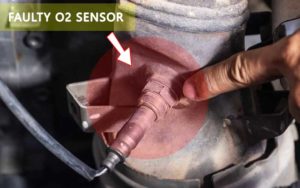
This then makes the O2 sensor become faulty which in turn makes your vehicle’s engine to experience difficulties in acceleration, use more fuel, while at the same time misfire. In case therefore the O2 sensor is faulty, it sends a signal to your vehicle’s onboard computer and thus the turning on of the check engine light.
In order to make sure that it is the O2 sensor that is faulty, look for high consumption of fuel and a foul smell resembling that of rotten eggs and misfiring of the engine. Solving this problem ought to be a walk in the park, as all you need to do is replace all the O2 sensors of repairs them if possible.
4. Clogged Catalytic Converter
Whereas the O2 sensor is tailored towards monitoring the gases that come out of the exhaust, the catalytic converter is responsible for filtering these exhaust gases before they are emitted out by the tailpipe by converting carbon monoxide to much healthy carbon dioxide.
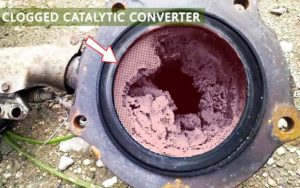
With time, this catalytic converter wears and tears with time or gets clogged with the debris in the exhaust system. When this occurs, therefore, the clogged catalytic converter sends a signal to your vehicle’s onboard computer and thus the turning on of the check engine light.
So as to ensure that it is the catalytic converter that has a problem, look out for poor fuel consumption, uneven acceleration, and refusal of your vehicle to start. There is only one way that you can solve this problem and that is replacing the converter with a new one.
5. Dirty Air and Fuel Filter
For the ultimate performance of your vehicle, it is important to always ensure that you do maintenance services occasionally. One of the key things that mechanics do whenever you take your car for service is changing the used oil that it has.
However, many mechanics and vehicle owners only concentrate on changing the oil but not the air and fuel filters. These filters are very important, as they are responsible for cleaning the fuel and the air that enters your vehicle thus helping it burn fuel correctly.
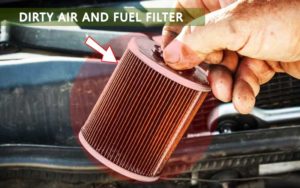
Whenever therefore these filters are clogged with dirt, your vehicle’s fuel sensors will take note of the problem and send a signal to its onboard computer and thus the displaying of the check engine light.
Dirty air and fuel filters do not only turn on your vehicle’s check engine light, they also make your vehicle’s engine stall, use much fuel, and have acceleration problems. In order to solve this, just replace these filters with new ones.
6. Damaged Air Flow Sensor
Your vehicle’s airflow sensor is a sensor that is responsible for mixing the correct amount of air and fuel. This in turn helps your vehicle to maintain an efficient as well as clean burn in the combustion chamber and thus improve its performance.
In case therefore this sensor is damaged, it sends a signal to the onboard computer of your vehicle, so as to inform you that it needs cleaning or replacement. A faulty air flow sensor will occasionally crank over your vehicle thus preventing the engine to start.
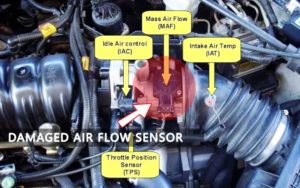
In addition, it also makes your engine to hesitate when accelerating and also produces a sound like it has hiccups. The solution to a damaged airflow sensor is replacing or cleaning it so that it can perform its responsibilities accordingly.
7. Non-Lubrication of the Engine
One of the most complex causes of the turning on of your vehicle’s check engine light is the non-lubrication of your vehicle’s engine. While all the above causes being easily resolvable, if this is the problem, then its solution is quite tricky.
Your engine consists of moving parts and therefore needs oil for lubrication. In addition, the pressure in the engine must be regulated at a perfect level.
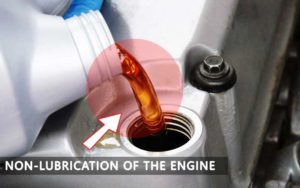
However, dirty oil and engine sludge increases or reduces the pressure in your vehicle’s engine which in turn makes the oil pressure sensor send a signal to your vehicle’s onboard computer and thus the turning on of the check engine light.
If left unsolved, a non-lubricated engine can heat up and thus cause damage. That is why it is always important to make sure that your engine is properly lubricated.
If this is the cause of your check engine light turning on, then you cannot be able to fix the problem on your own, as you need the services of a mechanic. However, you could opt to drain all the oil and fuel that your vehicle may be having and replacing it with a new one.
Whenever your vehicle’s check engine light turns on, you need to be very careful as a minor issue could lead to a very serious problem and that costs money. You should therefore never assume that it is a small issue and sit on it thinking that it will solve itself on its own.
Your vehicle’s optimal performance is of extreme importance in this case. As such, therefore, it is important to always make sure that your vehicle receives maintenance services as often as possible.
Whenever therefore the check engine light turns on, on your vehicle’s dashboard, you need to contact your mechanic right away or try to solve it on your own as illustrated in this article, because prevention is better than cure and will save you large sums of repair money.
Share this content:
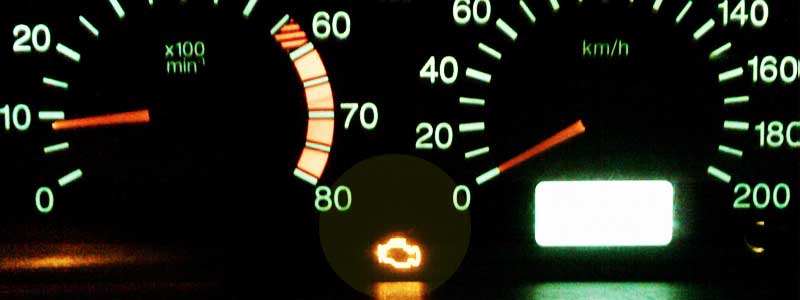

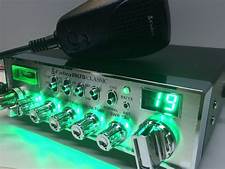



Post Comment